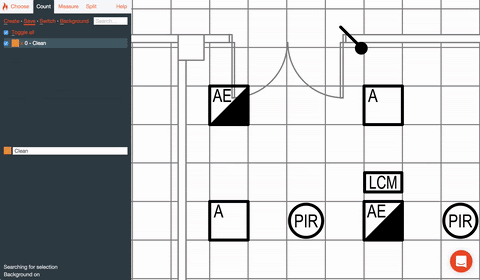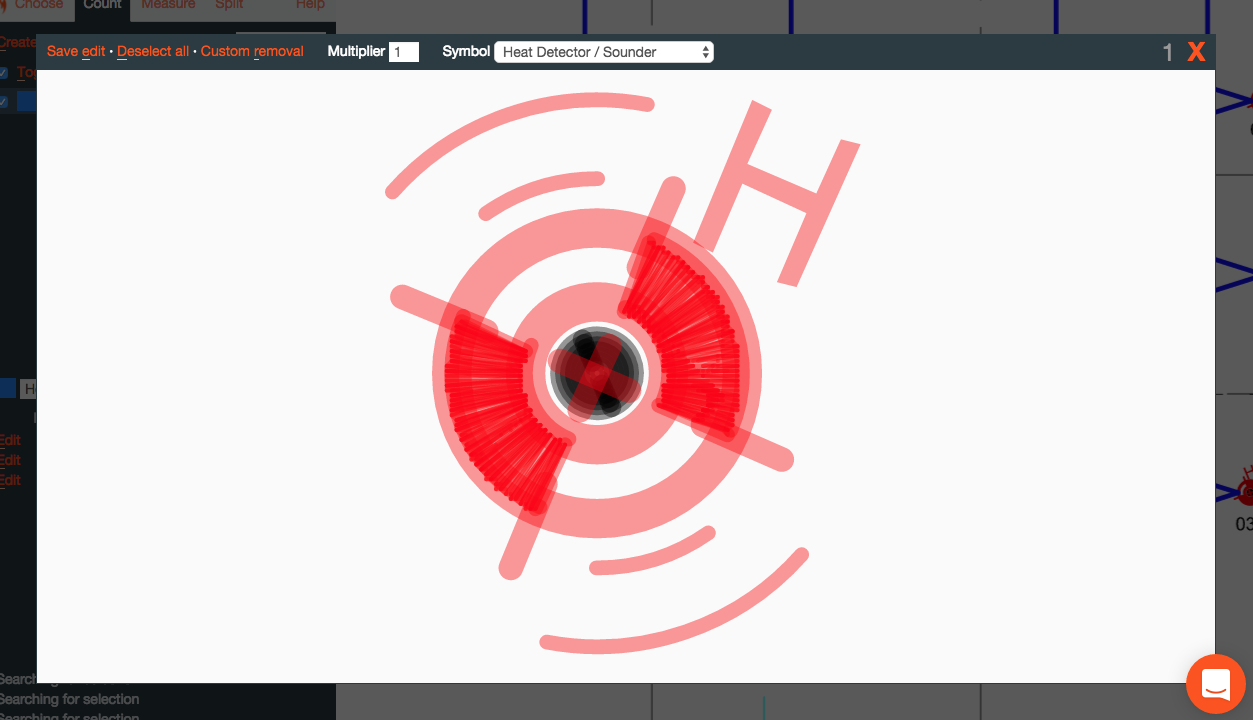
If you’ve purchased takeoff software, learning a few best practices can help you make the most of your investment.
Learning how to use takeoff software by the most efficient means can really help you to maximise your time.
Here at Countfire, we look at our best practices in terms of workflows, and we’d like to share a few of these with you. Take a look at how you can make the most of Countfire:
What is a workflow?
You may have heard the term “workflow” thrown around a lot over the last few years. Admittedly, it has become something of a buzzword out there, but it has significant meaning when it comes to getting the best from Countfire.
A workflow simply means that you have a systematic or organised process from which to get a key task done. It might refer to manufacturing materials as much as it refers to a process you follow on software.
In our case, workflows help you to accomplish the major tasks you need to do when it comes to counting takeoffs. If you started out preparing quotes by counting takeoffs manually, you probably developed a certain workflow that worked for you - a systematic way of ensuring that all elements were counted.
We create “best practice” workflows because when you’re using software, you can use the features available to your best advantage by following those workflows. Let’s look at a few best practices for Countfire:
1. Make selections cleanly
When you can make clean selections, you’ll help Countfire to automatically count correct matches for the symbol you have selected. This is a key best practice for using Countfire.
To understand this, you need to know what a “poor” selection means. Selections that are too complex or too simple will result in either false positives, or not enough matching symbols counted.
This might be due to:
- Complex selection - where you select extra features around the symbol so the system reads those features as part of the system. See the GIF below - the selection includes the wiring around the symbol, which messes with the count. This might result in just one match for your selection, even if there are 50 of that symbol.
- Simple selection. Perhaps you only select part of the symbol, which leads to a large number of false-positives. See the GIF below - the selection of just the “A” part of the symbol means every A on the drawing is selected.
A clean selection includes the complete symbol reference and body, but doesn’t include any unnecessary elements. This means that Countfire can easily count the exact matches, as in the GIF shown below:

We recommend doing a couple of things to make it easier to select cleanly:
- Hide the background of your drawing so that hidden elements are no longer available for selection.
- Hide symbols that have already been counted - again so they aren’t available to select.
2. Learn keyboard shortcuts
Keyboard shortcuts help you to efficiently get a task done, without clicking around. For example, you probably know that to copy something on your PC, you can either right-click and select “copy”, or you can select it and hit “control + c.”
Countfire also makes use of keyboard shortcuts - here are a few you should know:
- In the main interface, W lets you cycle through tabs.
- In the count tab:
A = Save
B = Show/hide the background
C = Create new symbol description
E = Edit first selection under current symbol heading
F = Power search
S = Selection mode
T = Show/hide counted symbols
Shift + T = Selectively show/hide counted symbols
Enter = Rename symbol heading
Up and down arrows = cycle up or down through the list of symbol headings - In the edit window:
E = Edit the last selection/ close edit window
D = Deselect all
Esc = Cancel edit
Up and down arrows = Cycle up or down through symbol selections
There are a number of other keyboard shortcuts, including for the measure tab, split tab, while selecting a symbol, while drawing lines and while using a mouse. Check them out here.
3. Simplifying complex symbols
Have you had to deal with overly complex drawings? This is something that comes up every now and then for electrical estimators and can make it more difficult to count symbols, either manually or using takeoff software.
Complex symbols can become problematic when they result in you having to make a large number of selections to count all symbols. Countfire can help you to simplify those complex symbols so that counting is cleaner.
First, you need to identify those complex symbols in Countfire. You can spot them two ways:
- Look at your selection listing area - does each selection have a high number of elements? Are the number of elements inconsistent between selections?
- Deselect all elements within the edit window. If you see the faint outline of a significant number of individual elements, you have a complex symbol.

Here is our best practice workflow for simplifying your symbol selections:
- Select the whole symbol.
- Open the edit window (Shortcut = E).
- Deselect all elements (Shortcut = D).
- Using the edit tools, add back in only the core elements that make up the symbol (IE: the symbol’s reference & outline).
You’ll find that by doing this, your automatic count can improve significantly, with more symbols counted, meaning you don’t have to make as many selections.
4. Automatically count revised drawings
Revisions to drawings are relatively common, but if you were counting takeoffs manually, they could mean a lot of extra work! With Countfire, you can automatically count revised drawings, with four possible options:
- Upload the drawing to the same discipline (within the same project). This is useful if you’re doing an add and omit exercise with the drawings.
All symbol descriptions get lined up in Excel, making it easy to compare between the old and new drawings. A best practice is to prefix the new PDF file with an identifiable file name prior to upload, so that you can clearly make out the alphanumeric listings on the Excel sheet.
Also remember that symbol selections are matched across all drawings within the same discipline, so revised drawings can affect your quantities shown on original drawings. - Upload the drawing to a new discipline (within the same project). This is particularly useful if you’d like to keep the new and old drawings separate, but within the same project.
You will need to copy symbol descriptions and selections, and each drawing will be itemised on separate Excel spreadsheets. In this case, selections on revised drawings do not affect your quantities shown on your original drawings. - Upload to a new project. Why would you do this? You may want to keep revised and original projects completely separate, especially if they involve many drawings.
Just like uploading to a new discipline, you’ll need to copy symbol descriptions and selections, and each drawing will be itemised on separate Excel sheets. Selections on revised drawings will not affect your quantities shown on original drawings
Countfire’s matching algorithm will automatically work to find symbols on your revised drawings, but those symbols must be fundamentally the same and made up of the same elements. The drawing should also be at the same scale as the original.
Final thoughts
These are just a few best practices for using Countfire takeoff software. The more you know, the more efficiently you can use the software to aid with accurate estimates.
If you want to know more about getting the best from Countfire, we have a number of useful articles in our knowledge base that you can access here. Look for best practice workflows as well as the basics to more advanced techniques for using Countfire.
Let us know if we can be of assistance! We’re always happy to provide support when needed.
.avif)

